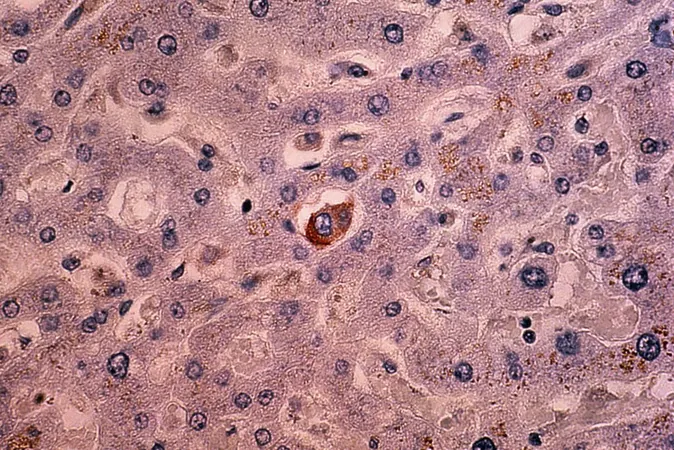
Reassurance for Early Breast Cancer Survivors: The Real Risk of Second Cancers Uncovered!
2025-09-03
Author: John Tan
A groundbreaking study in The BMJ unveils crucial insights for women who have triumphed over early invasive breast cancer. While these survivors face a slightly elevated risk of developing second cancers compared to the general population, the reality is far less daunting than many might expect.
Big Data, Bigger Insights!
Researchers meticulously examined data from a staggering 476,373 women diagnosed with early invasive breast cancer in England, spanning from 1993 to 2016, with follow-ups extending through 2021. This extensive analysis stands as one of the largest and most comprehensive investigations into the potential long-term risks of secondary cancers following an initial breast cancer diagnosis.
The Stats You Need to Know!
Over two decades, 64,747 women developed a second primary cancer. However, comparisons with women of similar ages in the general population reveal a much less alarming scenario. By the end of the study period, approximately 13.6% of women had developed a non-breast cancer—an increase of just 2.1% over what was expected. Likewise, 5.6% experienced contralateral breast cancer risk, which translates to a mere 3.1% uptick.
Understanding the Drivers of Risk
Interestingly, contralateral breast cancer accounted for nearly 60% of this additional cancer burden among survivors. Age plays a pivotal role; younger women, particularly those diagnosed at 40, exhibited a threefold increased risk of developing a contralateral tumor by age 60 compared to their peers in the general population.
What Types of Second Cancers Should You Know About?
The research pinpointed uterine, lung, and colorectal cancers as the most prevalent non-breast secondary cancers among survivors. However, the added risks for these cancers were minimal, hovering below one percent each over 20 years.
The Impact of Treatments on Cancer Risks!
A significant revelation of the study centers on adjuvant therapies—essential treatments administered post-surgery aimed at curbing recurrence risks. Findings revealed that while radiotherapy is associated with heightened risks for contralateral breast and lung cancers, endocrine therapy seemed to lower the risk of contralateral breast cancer while raising uterine cancer risk.
The Bottom Line for Survivors!
Despite some limitations, including gaps in lifestyle data and family health histories, this study paints a clearer picture of cancer survivorship risks. Significantly, it counters the prevailing fears surrounding subsequent cancer threats, highlighting that the modest excess risks should not overshadow the sweeping advancements in breast cancer survival over recent decades.
Empowering Survivors with Information!
Patients and advocates call for these reassuring findings to be widely disseminated. Access to accurate risk information empowers survivors to make informed decisions about their futures: "Having this information readily available helps us to plan our lives and anticipate what's ahead," they emphasize.



 Brasil (PT)
Brasil (PT)
 Canada (EN)
Canada (EN)
 Chile (ES)
Chile (ES)
 Česko (CS)
Česko (CS)
 대한민국 (KO)
대한민국 (KO)
 España (ES)
España (ES)
 France (FR)
France (FR)
 Hong Kong (EN)
Hong Kong (EN)
 Italia (IT)
Italia (IT)
 日本 (JA)
日本 (JA)
 Magyarország (HU)
Magyarország (HU)
 Norge (NO)
Norge (NO)
 Polska (PL)
Polska (PL)
 Schweiz (DE)
Schweiz (DE)
 Singapore (EN)
Singapore (EN)
 Sverige (SV)
Sverige (SV)
 Suomi (FI)
Suomi (FI)
 Türkiye (TR)
Türkiye (TR)
 الإمارات العربية المتحدة (AR)
الإمارات العربية المتحدة (AR)